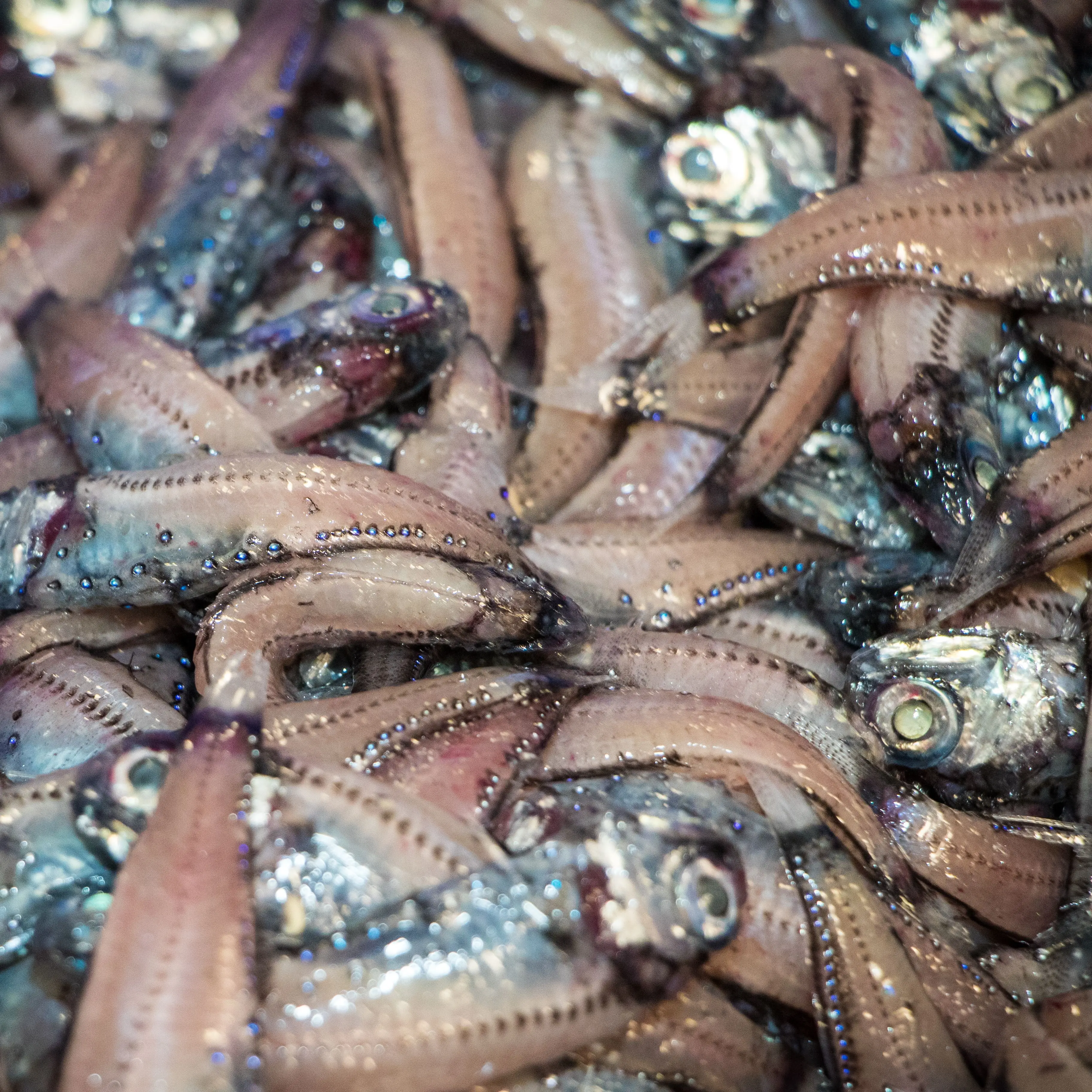Myctophids
Speedy Little Lanternfishes, Hunted by All
First off, the tiny stars of the show: myctophids. These are little open-ocean fishes, about the size of a house key. They have silvery scales and light organs called photophores dotted along their bodies, and they move in schools.
Almost everything eats them. With this unfortunate role of being the prey of many, many species – from commercial hoki to protected endemic NZ fur seals and sea lions – myctophids are extremely important in ocean ecosystems. However, little is known about them, leaving a large gap in our knowledge of how these ecosystems work. Myctophid research was therefore a key part of this voyage, using a combination of echosounders and midwater tows to gather data.
Echosounders can detect myctophid schools because the sound waves bounce off them, forming a blob of acoustic backscatter on an echogram – a visualisation of what the echosounder detects. A key part of this Tangaroa voyage was to ‘ground-truth’ the acoustic backscatter, which means seeing if those blobs are actually myctophids (and which species) by catching them in midwater tows.
Two myctophid species which popped up in many of these tows were Hector’s and Electrona lanternfishes. The bioluminescence glimmering from their photophores makes them look like speedy little lanterns, hence the name.

Species in the genus Electrona can be identified from a silvery mass of other myctophids by their larger size, round head, and the horseshoe-shaped scale pockets along their lateral line. (Awesome side note: a lateral line is a line of sense organs on a fish which detects water movement, which allows them to sense the vibrations of other fish moving around them. Great for not crashing into your neighbours when schooling.)

Above: An Electrona myctophid.
Hector’s lanternfish is Lampanyctodes hectoris. We use the species code of LHE in the wet lab (the wet lab is a science lab, just with lots of water and fish) because communicating in Latin with other scientists while wearing earmuffs is a little difficult. It’s also much faster to tap out on the waterproof electric keyboards during data entry. LHE is much smaller than Electrona (ELC), and the line of photophores running along its belly has three photophores veering off it like a zip. They are widespread in the Southern Hemisphere and can be found as deep as 300m. They hide there in the depths during the day, and migrate to the surface at night to eat planktonic crustaceans.

Above: Hector’s lanternfish (Lampanyctodes hectoris).
Collecting information on species in the middle of the food web, like myctophids, means we can fill gaps in the knowledge needed to create an ecosystem model of the Sub-Antarctic. An ecosystem model means that we will be able to better understand and predict the effects of environmental variability on how the ecosystem works, including the effects of climate change. The speedy little lanternfishes and how they respond to change will have a massive impact on the commercial and protected species which depend on them as prey.

Above: Voyage leader and NIWA fisheries scientist, Pablo Escobar-Flores with a box of myctophids.


